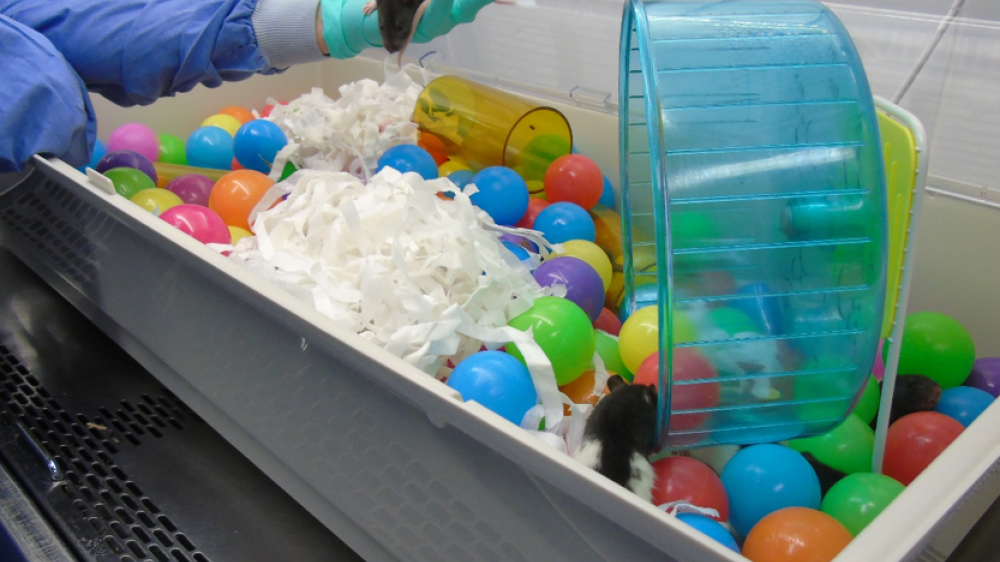Approaches to evaluating enrichment
There are different approaches to evaluating enrichment. As the ultimate aim is to improve animal welfare, you will need to identify and assess suitable welfare indicators. Often this is done by recording changes in the animals’ behaviour, though physiological measures are sometimes used (e.g. cortisol levels in faeces as a marker of stress).
In this section we outline three behaviour-based approaches for evaluating enrichment:
- Simple monitoring of behaviour in the presence and absence of the enrichment using an ethogram.
- Preference tests to assess which of two or more enrichment items is preferred.
- Motivation tests that aim to establish how much work the animals will do to access an enrichment item and therefore how much they value it.
The approach that is most suitable for you and your facility, and the types of data you collect, will depend on the aims of your enrichment, what you are able to measure, your skillset and schedule, and the resources available to you.
Conducting a study to gain insight into what animals want can be broken down into distinct steps. To enable you to do this we have provided example study protocols, which can be tailored to your circumstances. We also provide advice on what to consider before you begin, and how to improve the scientific quality of your study.
Additional resources
Protocols and data analysis
- A behavioural monitoring resource, produced for educators by the Association for the Study of Animal Behaviour (ASAB), that includes examples of behaviour sampling methods and data analyses.
- A 1-hour Listen Again video presentation covering the fundamentals of recording the behaviour of non-human primates in captivity, with advice applicable to all species.
- A paper on how to improve the visualisation of data, with examples of different types of plots. This paper is aimed at researchers and therefore assumes prior knowledge on handling and presenting data. See Table 3 for free resources that can be used to create figures for small datasets.
- A free, online course on data analysis, statistics and probability from the Khan Academy. Tutorials are also available via YouTube.
Online articles and frameworks
- An article focusing on evaluating enrichment for zoo animals, which contains information that can also be applied to animals in a research setting.
- A review article focusing on enrichment for captive animals, which includes sections on using enrichment to improve welfare in captivity and evaluating the success of enrichment. Note that this article was originally published in 1989 and therefore the referenced studies are dated. However, the general information within the article remains relevant.
- The S.P.I.D.E.R. framework established by Disney's Animal Kingdom to develop, initiate and maintain enrichment and animal training programmes. The components are setting goals, planning, implementing, documenting, evaluating and readjusting.
Guidance on using ethograms to evaluate environmental enrichment, including examples. (Image credit: Preclinical Research Facility, University of Leicester.)

